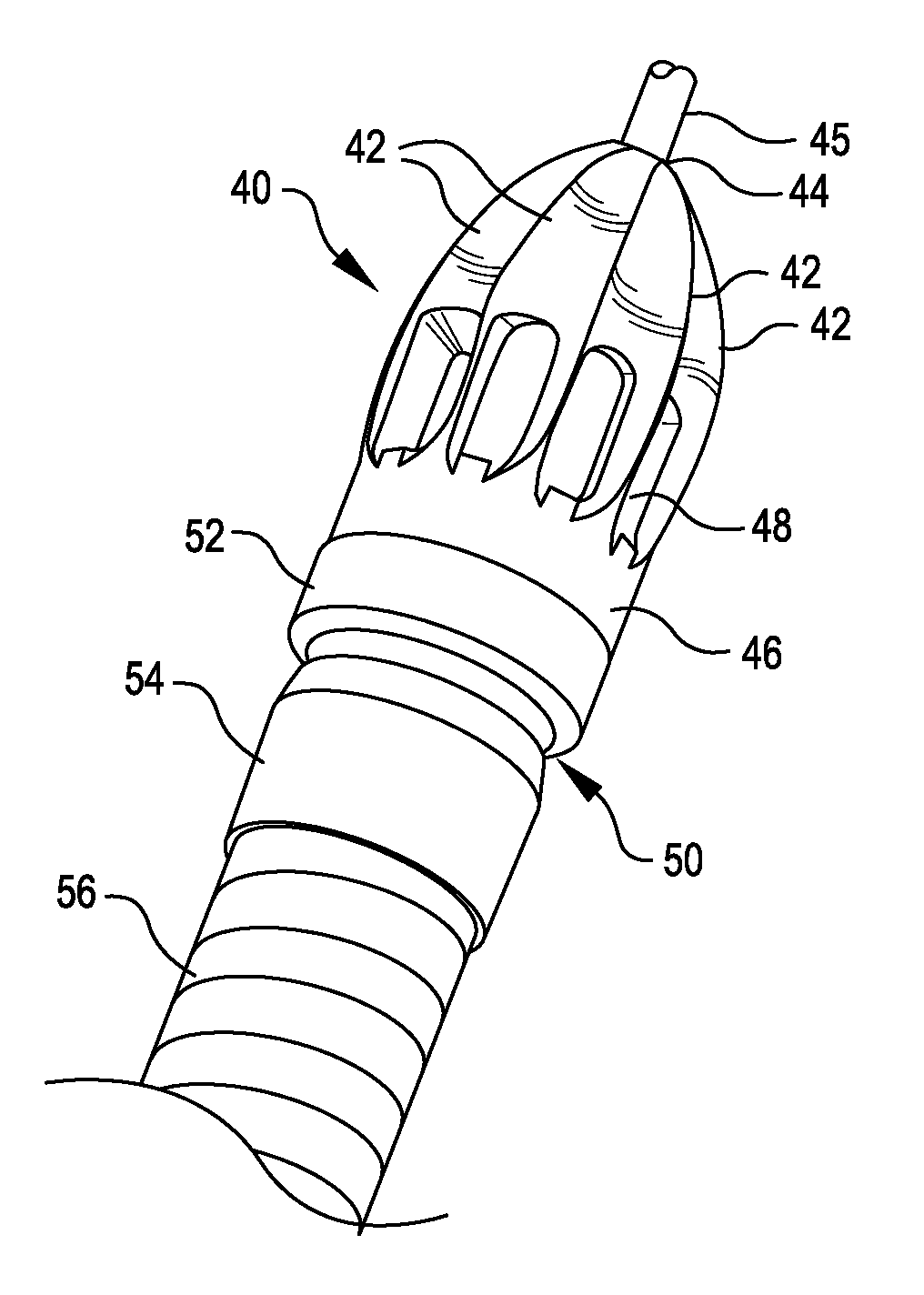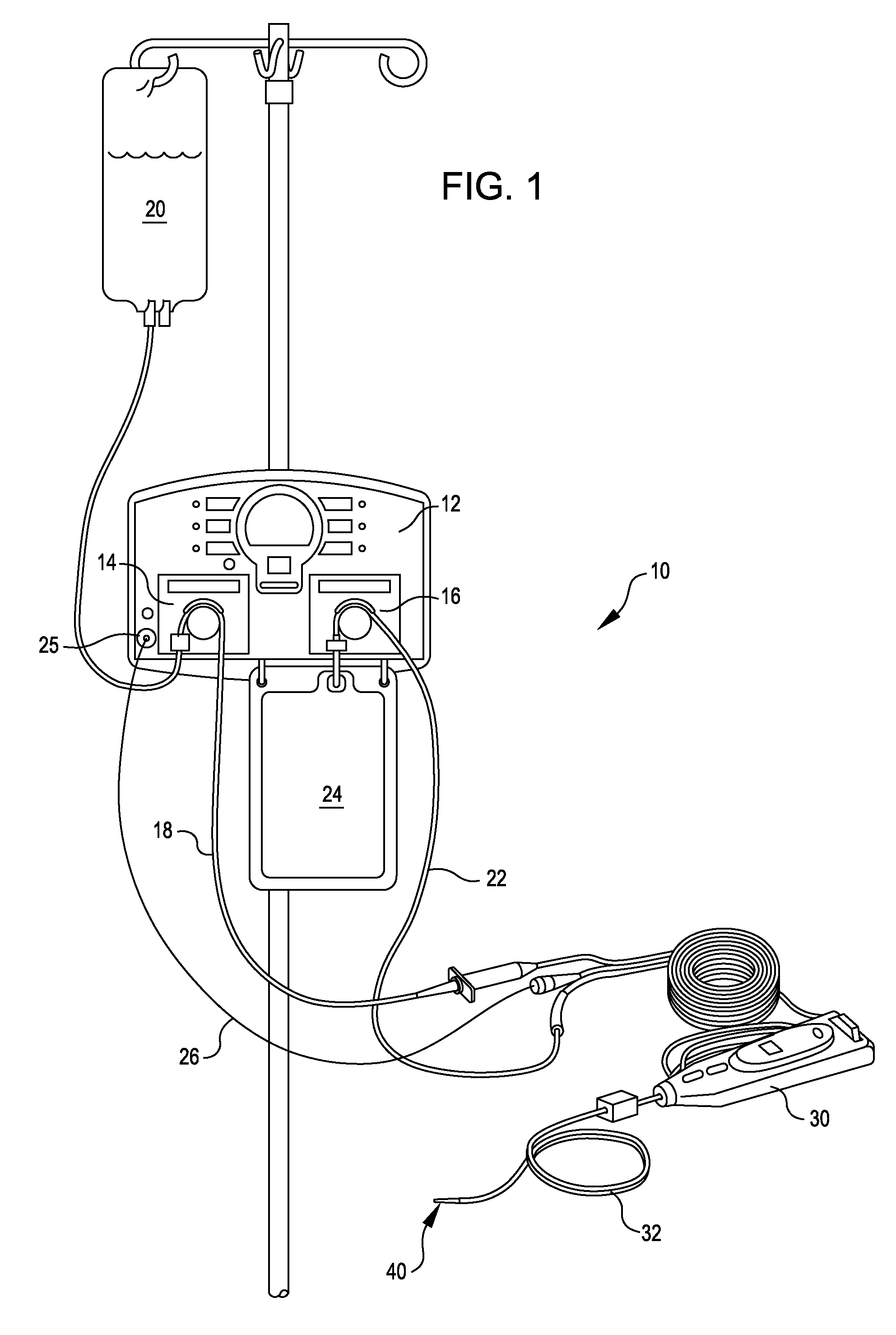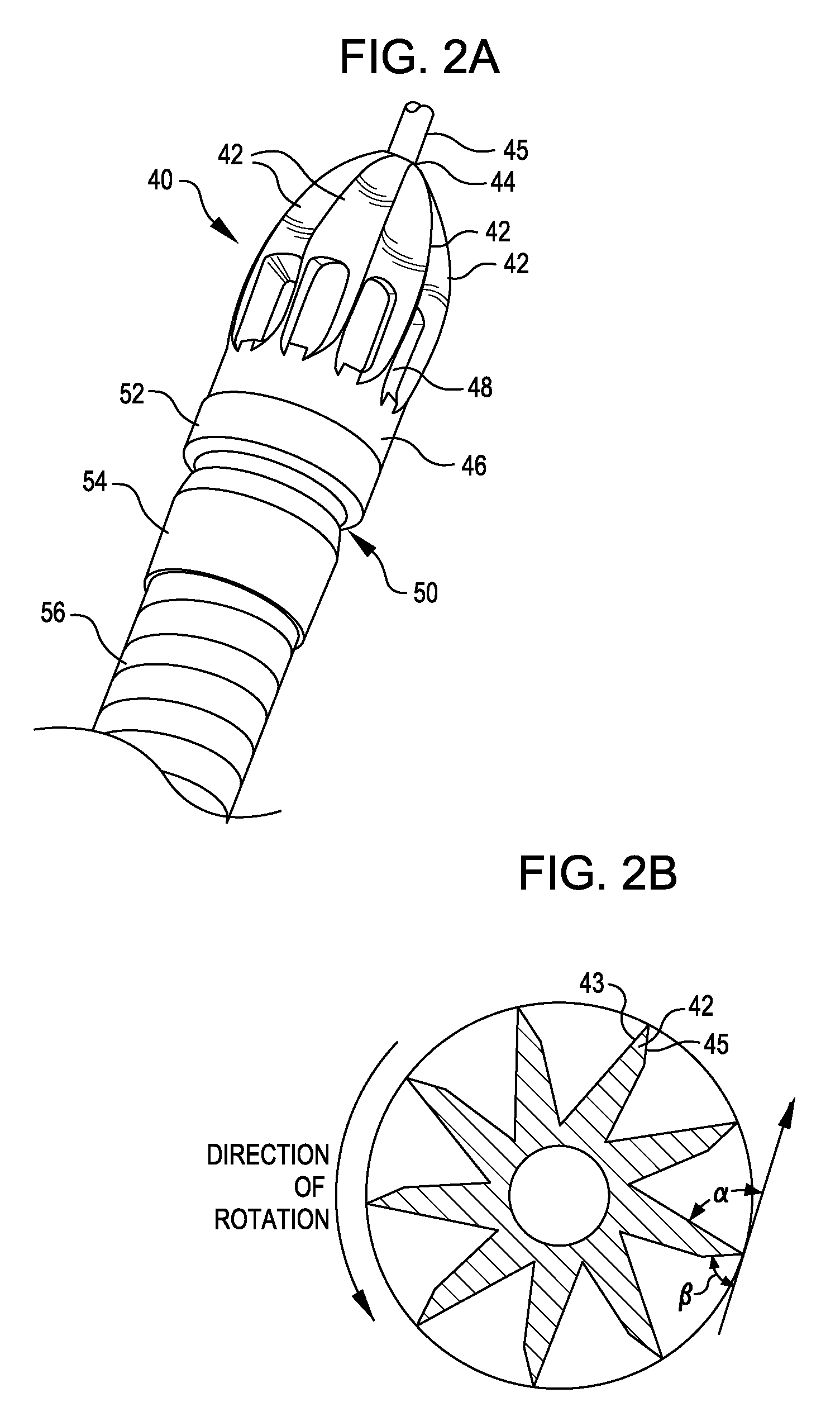Interventional catheters having cutter assemblies and differential cutting surfaces for use in such assemblies
a technology of cutters and assemblies, which is applied in the field of interventional catheters, can solve the problems of affecting the safety and reliability of the system, diamond grit particles, and diamond grit particles not operating as differential cutters, and achieve the effect of clearing an even larger volume of occlusive materials
- Summary
- Abstract
- Description
- Claims
- Application Information
AI Technical Summary
Benefits of technology
Problems solved by technology
Method used
Image
Examples
Embodiment Construction
[0037] Certain preferred embodiments are described herein with reference to a material removal device having a rotational cutting head. It will be appreciated that this device embodiment is being described as illustrative and that the inventions and features disclosed herein are applicable to interventional catheters having different types of operating heads.
[0038]FIG. 1 illustrates an exemplary embodiment of an interventional catheter assembly 10 comprising console unit 12, controller 30, and catheter system 32 having a rotatable operating head 40 located at or in proximity to the distal end of the catheter system and incorporating one or more cutter assemblies. Controller 30 may be used to manipulate (e.g. advance and / or rotate) the catheter system 32 and operating head 40, or alternative controls may be provided. The configuration of the operating head and cutter assemblies will be described below with reference to FIGS. 2-7.
[0039] Console unit 12 may incorporate an infusion pu...
PUM
 Login to View More
Login to View More Abstract
Description
Claims
Application Information
 Login to View More
Login to View More - R&D
- Intellectual Property
- Life Sciences
- Materials
- Tech Scout
- Unparalleled Data Quality
- Higher Quality Content
- 60% Fewer Hallucinations
Browse by: Latest US Patents, China's latest patents, Technical Efficacy Thesaurus, Application Domain, Technology Topic, Popular Technical Reports.
© 2025 PatSnap. All rights reserved.Legal|Privacy policy|Modern Slavery Act Transparency Statement|Sitemap|About US| Contact US: help@patsnap.com



